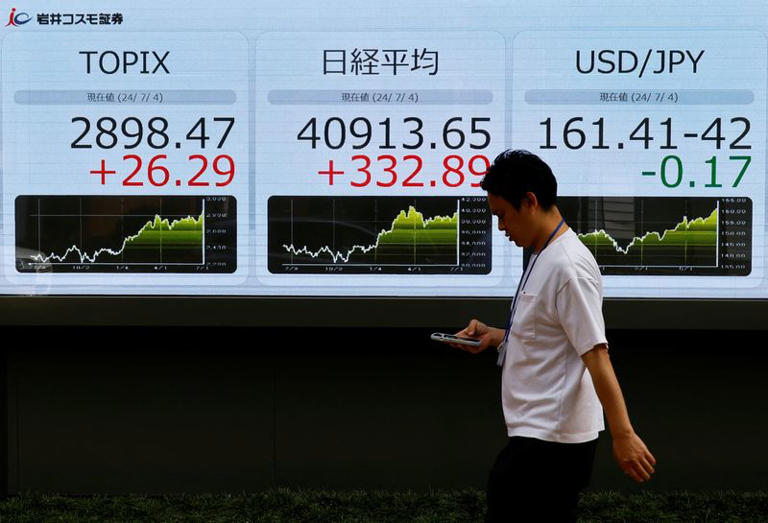Oil prices remained near seven-week lows on Tuesday, driven by a softening demand outlook that negatively impacted commodities across the board. This cautious sentiment extended to bond, currency, and stock markets as investors awaited crucial central bank meetings in the U.S. and Japan, alongside a slew of major corporate earnings reports.
Brent crude futures dropped to $79.36 overnight, as traders focused on concerns over Chinese demand rather than ongoing geopolitical tensions in the Middle East and Venezuela. The market reaction highlighted the significant influence of China’s economic activity on global commodity prices, leading traders to adopt a selling stance amid uncertainty.
The S&P 500 steadied after experiencing a two-week downturn. Futures for the index ticked 0.4% lower in the early Asian session, reflecting the market’s cautious stance ahead of the two-day policy meetings in Washington and Tokyo, which are set to culminate with interest rate decisions on Wednesday. These meetings are closely watched as they could signal future monetary policy directions.
In Japan, the Nikkei index, which suffered a nearly 6% decline last week, was down by 0.7% in morning trade. This decline mirrored broader regional trends, as MSCI’s broadest index of Asia-Pacific shares outside Japan also fell by 0.7%. The pullback in equities highlighted the market’s apprehension about upcoming central bank decisions and their potential impacts on the global economic outlook.
Market expectations suggest there is almost no chance of a U.S. rate cut this week. However, investors have fully priced in a 25 basis-point reduction in the Fed Funds rate for September, anticipating that policymakers will adopt a dovish tone to support the economy amid ongoing uncertainties. This dovish outlook is crucial for investors as it could influence investment strategies and market movements in the coming months.
In Japan, a wider range of outcomes is anticipated. Markets have priced in nearly a 60% chance of a 10 basis-point rate hike by the Bank of Japan. Investors are keen to hear how the central bank plans to gradually unwind its extensive bond-buying program, a move that could have significant implications for global financial markets. The potential shift in Japan’s monetary policy stance is being closely monitored as it may signal a broader trend among central banks towards normalization.
Chris Weston, head of research at Pepperstone in Melbourne, commented on the prevailing market sentiment, saying, “The term ‘calm before the storm’ has been heard across the floors. This is a day for position management and to review broad exposures.” His remarks underscored the cautious approach being adopted by traders as they awaited clearer signals from central bank policymakers.
The dollar and yen traded within narrow ranges after recent significant movements. The euro was stable at $1.0851, while the Australian dollar, pressured by falling commodity prices, traded at $0.6536, down from nearly $0.68 less than three weeks ago. The yen, which had sharply rebounded from a 38-year low of 161.96 per dollar hit early in July, hovered at 153.95 per dollar.
Nathan Swami, head of currency trading at Citi in Singapore, highlighted the pivotal moment for the yen, stating, “We are at an interesting intersection for yen here,” with this week’s central bank meetings potentially redefining the rates outlook and the yen’s trajectory. He added, “It is too early to tell if the factors driving yen weakness have changed permanently. For now, this seems more like a short-term correction to the USD/JPY higher trend, but we feel there is downside risk that needs to be priced into a trade.”
Later in the day, major corporate earnings reports from Microsoft and chipmaker AMD are expected to draw significant attention after the bell in New York. These reports could provide insights into the tech sector’s performance and broader economic trends. Additionally, preliminary Consumer Price Index (CPI) data from Germany and Spain will offer further indications of inflationary pressures in Europe, potentially influencing European Central Bank policy.
Australian inflation data, scheduled for release on Wednesday, will be closely watched as it could impact the Reserve Bank of Australia’s future policy decisions. Meanwhile, the Bank of England’s policy meeting on Thursday presents an approximately even chance of a rate cut, adding to the week’s central bank-driven market dynamics.
